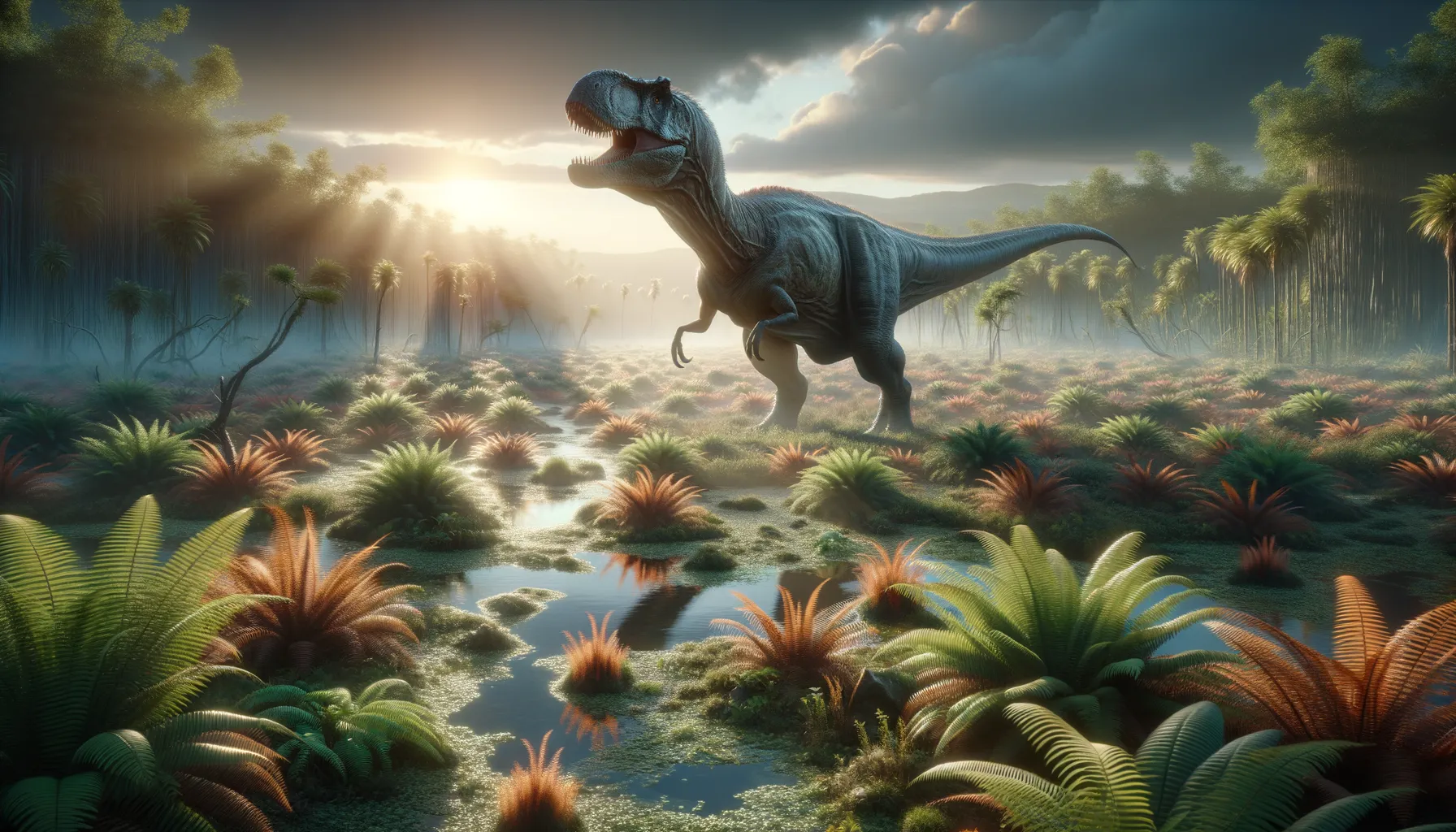
Laiyangosaurus
A giant of the lush Cretaceous landscapes.
Period
Cretaceous
Length
Estimated at about 8 meters long.
Height
Approximately 3 to 4 meters tall.
Weight
Around 2 to 3 tonnes.
Laiyangosaurus was an herbivorous dinosaur from the Late Cretaceous period. Known for its robust build, it played a vital role in its ecosystem. It roamed what is now China, feasting on the abundant plant life. With its moderate size and adaptive features, it was well-suited to face the challenges of its environment. This dinosaur is a window into the rich diversity of prehistoric life during its time.
Diet
Laiyangosaurus was herbivorous, feeding primarily on the lush vegetation of its time, including cycads and conifers. Its strong and durable teeth were well-adapted for chewing tough plant matter.
Hunting
As a plant-eater, Laiyangosaurus did not hunt. Instead, it foraged for plant materials using its keen sense of smell to locate food.
Environmental challenges
Laiyangosaurus faced several environmental challenges, including climate fluctuations that affected vegetation availability. Predators posed a constant threat, necessitating constant vigilance. It had to adapt to survive in environments that were dynamic and often changing, including seasonal changes in plant resources.
Speed
Moderate pace, adaptive to its environment.
Lifespan
Estimated to be several decades.
First discovery
First discovered in Shandong Province, China.
Fun Facts
- Laiyangosaurus is a genus of dinosaur from the Late Cretaceous period, meaning it roamed the Earth about 70 to 66 million years ago.
- It was a herbivorous dinosaur, meaning it primarily fed on plants.
- Laiyangosaurus was part of the hadrosaurid family, commonly known as duck-billed dinosaurs due to their distinctive snouts.
- Fossils of Laiyangosaurus have been unearthed in what is now modern-day China.
- The name Laiyangosaurus is derived from the Laiyang Basin in China where its remains were first discovered.
- This dinosaur is believed to have lived in lush floodplain environments, surrounded by rivers and vegetation.
- Laiyangosaurus had a unique cranial crest, which might have been used for visual display or vocal communication.
Growth and Development
Laiyangosaurus, beginning life small like other dinosaurs, grew slowly but steadily over the years. Juveniles stayed close to their mothers, benefiting from protection as they grew larger and more independent. Growth was fueled by their herbivorous diet, essential for achieving full size.
Habitat
Its habitat included lush forests and open plains rich with diverse flora. The environment was warm, offering ample food sources. Seasonal rains helped maintain a constant supply of water and plant growth, making it a thriving ecosystem.
Interaction with other species
Laiyangosaurus shared its environment with other herbivorous dinosaurs, with whom it occasionally competed for food. It relied on herd behavior for protection against predators, such as large theropods. Symbiotic relationships with smaller creatures likely aided in their survival.
Natural lifespan
Laiyangosaurus may have lived up to 30 years or more.
Reproduction
Laiyangosaurus, like many dinosaurs, laid eggs in nests. Parental care was likely involved in nurturing and protecting the eggs and the young. Hatchlings were vulnerable and relied on their parents for safety and guidance in early life.
Social behaviour
Laiyangosaurus lived in groups, which helped ensure collective safety from predators. Social structures were essential for communication and cooperation within the herd. Their interactions helped them thrive in a complex ecosystem.
Fossil locations
Fossils have been predominantly found in China, particularly in the Shandong Province. These discoveries have provided valuable insights into its lifestyle and environment. Ongoing excavations continue to produce new findings that enhance our understanding of this species.
